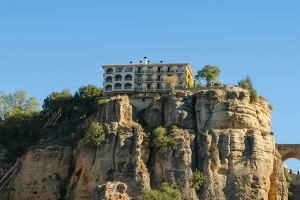Welcome, Lykkers, to the exploration of one of Buenos Aires' most iconic landmarks – the Obelisco.
This magnificent monument, which has stood tall since 1936, is a symbol of the city’s rich history, cultural significance, and architectural brilliance.
Introduction to the Obelisco
The Obelisco, located in the heart of Buenos Aires, Argentina, is one of the most iconic structures in the city. Standing tall at 67.5 meters, this monument symbolizes Argentina’s rich history and urban evolution. It was inaugurated in 1936 to commemorate the 400th anniversary of the founding of the city. Over the years, it has become a symbol of the city itself, attracting tourists and locals alike, especially for its role in public celebrations and national events.
Drone captures sea of fans celebrating in Buenos Aires after Argentina's World Cup win - video
Video by Guardian Football
The History Behind the Obelisco
The Obelisco was designed by the architect and urban planner, Clorindo Testa. Constructed with the aim of highlighting Buenos Aires’ growing importance as a global metropolis, the structure was initially met with mixed reactions. However, it quickly became an integral part of the city’s landscape. Its strategic location at the intersection of Avenida 9 de Julio and Avenida Corrientes places it at the heart of the bustling city, making it impossible to miss when navigating through Buenos Aires.
The Significance of the Monument
Beyond its aesthetic value, the Obelisco holds great cultural and historical significance. It marks the spot where the Argentine flag was hoisted for the first time in Buenos Aires in 1812. This historical event was pivotal in Argentina’s journey toward independence. Today, the Obelisco is more than just a monument; it represents the resilience and spirit of the Argentine people. It is often the site of political protests, celebrations, and large public gatherings, adding to its cultural relevance.
Design and Architecture
The Obelisco’s simple yet striking design consists of a rectangular base and a tapering shaft, with a small pyramid-like top. Constructed primarily from concrete, it was built using local materials, reflecting Argentina’s architectural ethos during the early 20th century. At night, the Obelisco is beautifully lit up, creating a stunning visual contrast against the city’s skyline. Its clean, geometric lines and towering presence make it a true masterpiece of modern architecture.
Tourism and Public Engagement
The Obelisco is not just a historical marker but also a popular tourist attraction. Tourists flock to the site to take pictures, learn about its significance, and enjoy the surrounding areas, which are rich in cafes, shops, and cultural activities. Public celebrations, especially on national holidays and sports victories, often take place around the Obelisco. It’s not uncommon for thousands of people to gather at the monument to celebrate Argentina’s World Cup victories or other significant events, making the Obelisco a center of national pride.
Access and Nearby Attractions
Visiting the Obelisco is quite easy, as it’s located in one of the most central areas of Buenos Aires. Public transport options like buses and the metro make it accessible for anyone visiting the city. Besides the Obelisco, the area around Avenida 9 de Julio is full of vibrant attractions, including the iconic Teatro Colon and several museums. You can also explore the nearby Plaza de la Republica, which is a bustling public space where locals relax and tourists marvel at the view of the monument.
Conclusion
The Obelisco of Buenos Aires stands as a timeless testament to the city’s culture, history, and architectural prowess. Its towering presence continues to captivate visitors from around the world, while its role in the collective memory of the Argentine people cannot be overstated. Whether you’re admiring its beauty during the day or witnessing a festive gathering at night, the Obelisco is an essential stop for anyone visiting Buenos Aires. Lykkers, if you ever find yourself in the Argentine capital, make sure to pay a visit to this monumental icon of the city!


